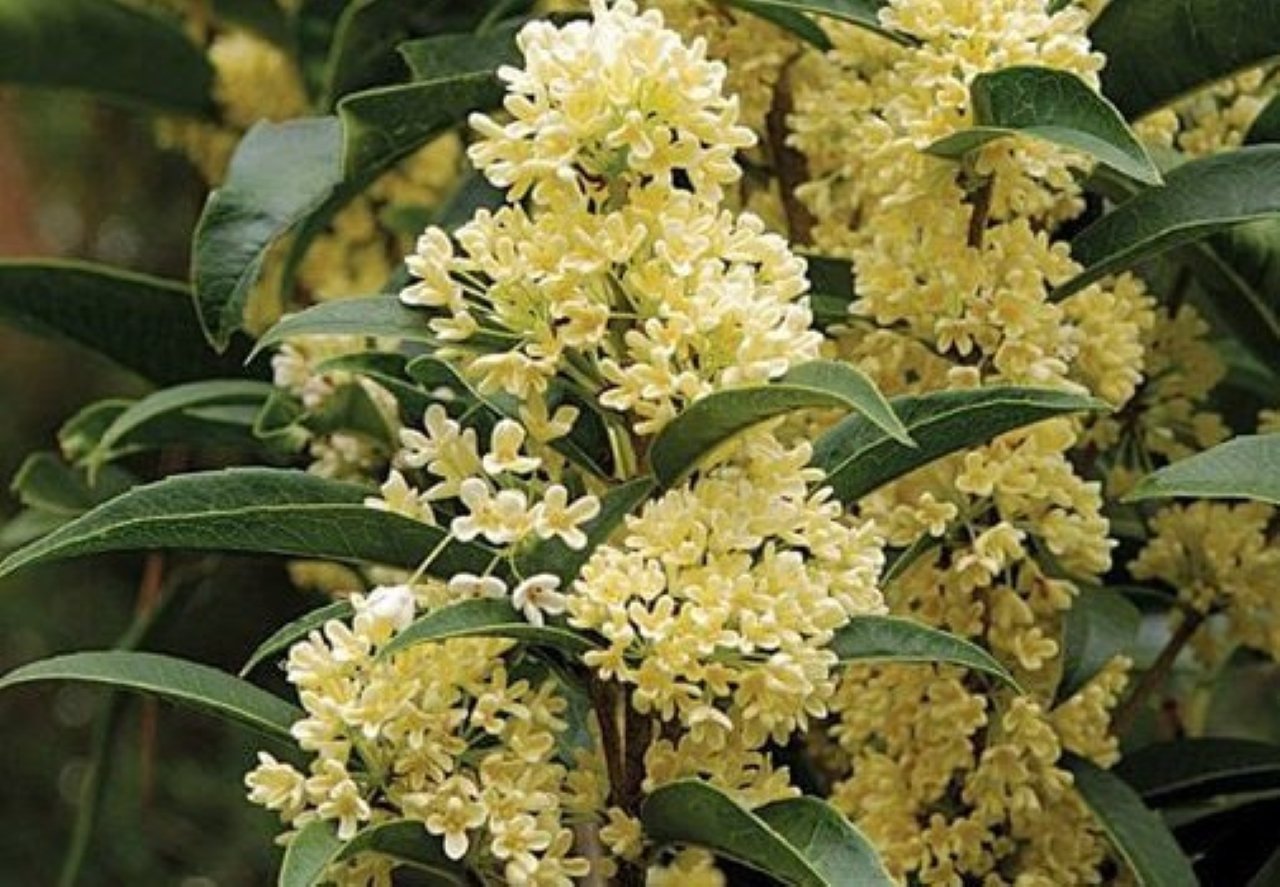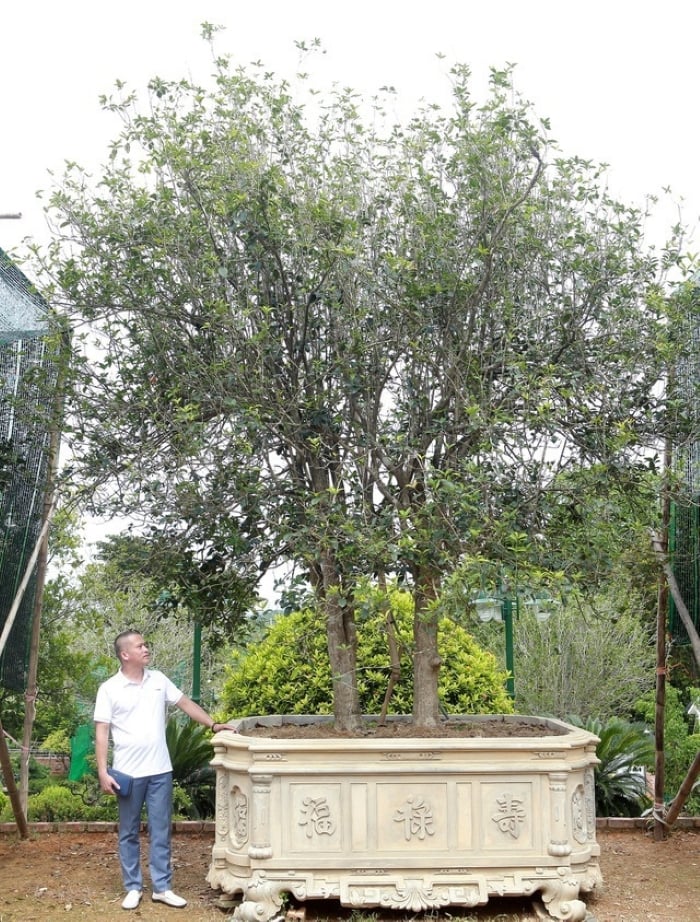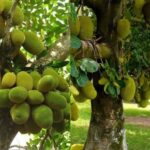Osmanthus trees possess not only positive feng shui implications but also exceptional aesthetic value.
Osmanthus fragrans, commonly known as sweet olive or fragrant olive, is a precious tree belonging to the Oleaceae family. Native to Asia, it is predominantly found in China and Japan.
However, in recent times, this tree has spread to various countries in Europe and North America, and especially Vietnam, where it is present in many provinces and cities.
The Osmanthus tree is not only a medicinal plant but also a popular ornamental tree. In recent years, it has been aggressively sought after by Chinese tree traders in the northwestern mountainous regions, leading to a scarcity of mature trees in Vietnam.

Osmanthus trees invite good fortune and prosperity
According to feng shui principles, Osmanthus trees attract wealth and luck, drawing the presence of the God of Wealth. They are believed to bring prosperity and success to the homeowners.
Traditionally, placing these trees in front of the house was considered a way to welcome honorable guests, thereby inviting good fortune and blessings for the family.
In Vietnam, the significance of Osmanthus trees extends beyond feng shui; they were once offered as tributes to the king. Possessing a mature Osmanthus tree is a matter of pride not only for tree enthusiasts but also symbolizes a valuable asset.
The flowers of the Osmanthus tree, ranging from white to yellow, bloom in clusters among the leaves, exuding a gentle fragrance, especially during autumn when they are in full bloom.
Apart from their visual appeal, these trees are prized for their medicinal properties. According to traditional Chinese medicine, various parts of the tree have diverse therapeutic effects, from relieving abdominal pain when used to make tea to treating muscle aches and kidney ailments. The fruits and stems are also utilized in herbal medicine to promote health and well-being.
The appeal of Osmanthus trees lies not only in their aesthetic and medicinal values but also in their resilience, ease of cultivation, and adaptability to harsh weather conditions.
Mature Osmanthus trees can fetch prices in the billions
Given their high economic potential, these trees have sparked a frenzy in the market, with some specimens selling for billions of dollars. Many individuals have gone to great lengths, even exchanging luxury cars, to acquire mature Osmanthus trees.
In 2017, a tree enthusiast in Sapa spent nearly 4.5 billion VND to purchase four mature Osmanthus trees, underscoring the exceptional value of these trees.
Bui Duc Dung, a renowned tree enthusiast from Viet Tri, Phu Tho, is known for his passion for traditional tree varieties such as tea, oak, and pine.

Bui Duc Dung’s Majestic Osmanthus Tree
Among his collection of mature trees is a unique pair of Osmanthus trees named “Huynh De,” which are extremely rare and highly valued. Despite receiving an offer of 3 billion VND, the owner chose not to sell, opting to keep them for his enjoyment.
“In the past, only the wealthy and privileged, such as royalty and high-ranking officials, could afford to grow golden osmanthus trees. The fragrant flowers were often used for making tea and held numerous other benefits,” shared Dung.
The high demand for Osmanthus trees in the international market, particularly from Chinese traders, has led to a decrease in the availability of mature trees in Vietnam in recent years.
The Secret to a Prosperous Home: Unveiling the Myth Behind the Jackfruit Tree
The jackfruit tree is a majestic and fruitful tree, revered for its delicious fruit and beautiful timber. However, in the past, people were averse to planting jackfruit trees in front of their houses. This reluctance stemmed from a belief that the tree’s strong presence and deep roots could bring bad luck and cause an imbalance in the harmony of the home. Superstitions aside, the jackfruit tree is a magnificent addition to any landscape, offering shade, beauty, and an abundance of sweet, nutritious fruit.




































